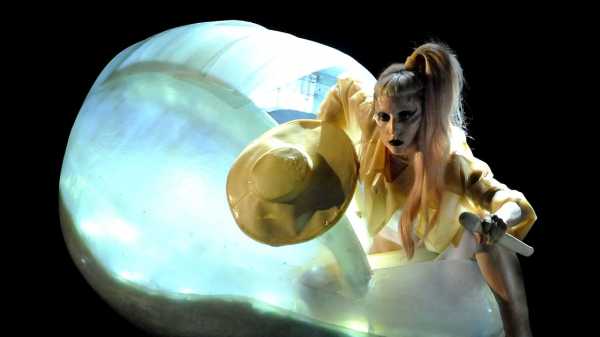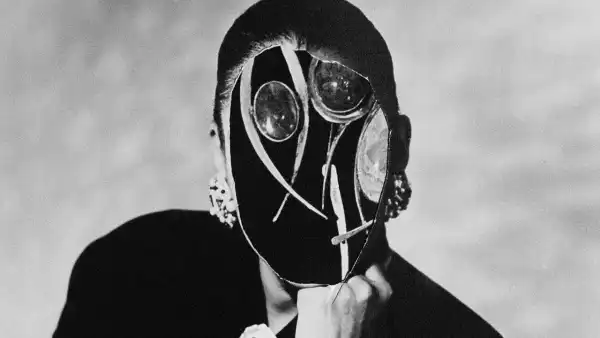
I can still recall the first time I used the phrase “performance art.” I was sitting—where else?—on the steps of my college’s English-department building, discussing some ill-advised boondoggle being put on by—who else?—my school’s secret poetry society. (Was somebody smoking a clove cigarette? You bet.) I don’t remember the particulars of the event, merely that whatever was happening was both high-minded and entirely nonsensical. I had taken to carrying a worn leather backpack around campus, which almost certainly featured a battered New Directions paperback jutting purposefully out of a side pocket. I was, of course, gloriously insufferable. I had no idea what “performance art” meant, or that it evoked a very specific lineage, but it sounded convincingly erudite, and my classmates nodded along in sage agreement. Performance art! Duh.
My older, do-the-research self now knows that performance art, as a practice, is linked to the European avant-garde art movements of the early twentieth century, where artists would stage provocative live exhibitions outside the formal context of the theatre. But, in recent decades, “performance art” has become a funny kind of catchall, deployed to imbue something with high-art pretension, or to explain work that’s otherwise inexplicable. The concept, it turns out, is stretchy enough to apply expansively. The important part seems to be an intention to goad, disrupt, or decontextualize. Its founding venue, Cabaret Voltaire—a Zurich night club, run by Dadaists, that opened (and closed) in 1916—provided a home for raucous, ill-mannered, and frequently absurd performances that couldn’t be staged anywhere else.
The parameters of performance art have only gotten fuzzier in the intervening century. Isn’t all art a performance? And doesn’t all art intend to move air? The performance artist Marina Abramović, in a video promoting her residency at the Museum of Modern Art, in 2010, further defined her work as experiential and ephemeral (it happens once, and it doesn’t repeat), and explicitly rooted in the body. (This makes it distinct from ambitious filmed projects, like Childish Gambino’s recent video for “This Is America.”) It has high and immediate stakes for the artist: “This is not theatre,” she said. “Performance is real. In the theatre, you can cut with a knife, and there’s blood. The knife is not real and the blood is not real. In performance, the blood and the knife and the body of the performer is real.”
In the past several decades, performance art—or at least the evocation of “performance art”—has somewhat unexpectedly wormed its way into popular music. The union began, perhaps, in the nineteen-sixties and seventies, with Yoko Ono and John Lennon’s bed-ins for peace, and reached a sort of apex with Lady Gaga arriving at the 2011 Grammy Awards inside a giant egg. (Gaga has cited the performance artists Klaus Nomi, Leigh Bowery, and Abramović as influential to her aesthetic.)
More recently, the phrase has become ubiquitous among rappers. In 2013, Jay-Z rapped his song “Picasso Baby”—which references Art Basel, the Tate Modern, Jean-Michel Basquiat, and Jeff Koons’s balloons—while circling Abramović at the Pace Gallery in New York. Last month, fans wondered whether Kanye West’s entire Twitter feed wasn’t, in fact, merely a staged bit of performance art, as evidenced in part by his allusions to the performance artists David Hammons and Joseph Beuys. On Sunday night, at the Sotheby’s auction house, in New York, the rapper A$AP Rocky staged a ninety-minute performance-art piece to reveal the cover art for “Testing,” his third LP. The work, titled “Lab Rat,” was streamed online and featured A$AP Rocky wearing an orange jumpsuit inside a transparent box. He’d cast himself as the titular lab rat, imprisoned in a dystopian, high-concept laboratory, where he was subject to malevolent meddling: eating hot peppers, drinking from a gallon of whole milk, answering invasive questions from bystanders, dunking himself in ice water, and so on.
It felt familiar, and conceptually limp. Because I found little significance in the act of beholding the performance (i.e. I was helplessly, catastrophically bored), I tried to understand it metaphorically. But the process of attempting to wring meaning from “Lab Rat” was excruciating. Was the clear box a stand-in for fame? Was the title an overt statement against animal testing? The jumpsuit a commentary on the prison industrial complex?
I can understand how the performance-art tradition, rooted in ideas of upheaval and impermanence, could be easily and successfully adopted by pop stars—in a way, they already trade in those things. But musicians as massively successful as Kanye West, Lady Gaga, Jay-Z, and A$AP Rocky can’t effectively rattle the culture because they are the culture. For pop stars, engaging in performance art feels less about conveying something new and meaningful to their audiences and more about imbuing their careers with the kind of seriousness previously reserved for less commercial artists.
But even that feels like a strange, outmoded neurosis—the rapper Kendrick Lamar, after all, just won a Pulitzer Prize. The distinctions between highbrow, middlebrow, and lowbrow have never felt fuzzier or less meaningful. Centers of cultural power are being questioned, if not dismantled. And performance art, like any art, should be judged by what it moves in the beholder, not what it broadcasts about the artist.
Sourse: newyorker.com






